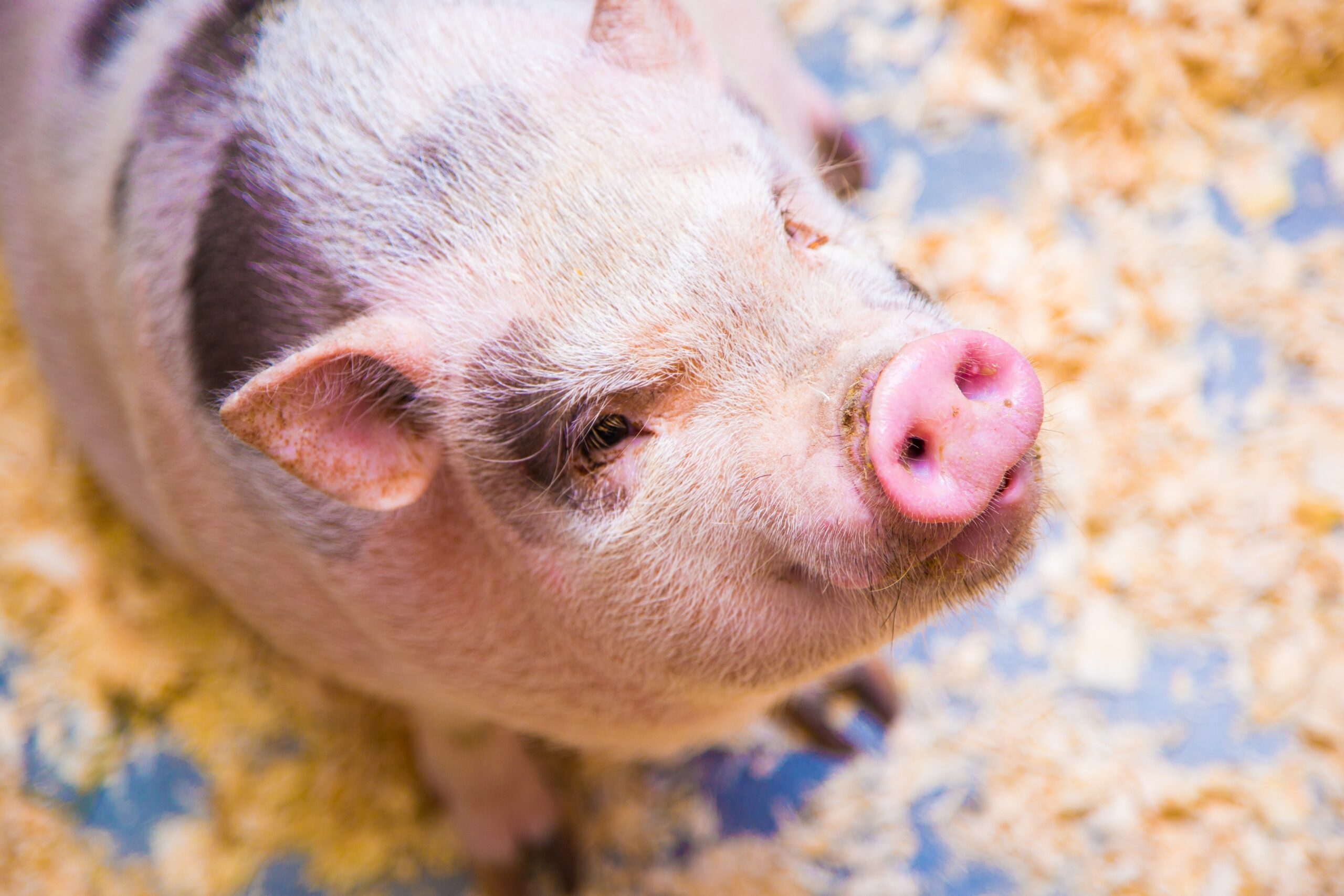Written by: Bria Osborne, OVC 2026
Edited by: Dr. Paisley Canning
Pigs are wonderful and special creatures. They have some anatomical features that are specific to them that makes caring for them unique. Here’s a list of 5 fun and quirky anatomical facts about pigs.
Pigs have scent glands (metacarpal glands) located on the back side of their front legs
These unique glands often get confused for infections, parasites, pimples, or skin conditions. These glands are completely normal for your pig to have and do not require you to drain them. They are better off left alone. See figure 1 below for the location of these metacarpal glands.
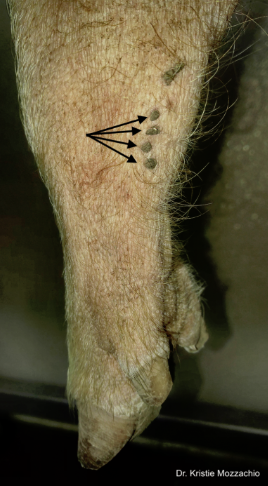
Photo Credit: Dr. Kristie Mozzachio
Figure 1: Above shows the location of the metacarpal scent glands.
Male Pigs grow tusks continuously
Tusks are elongated canine teeth which are deeply embedded into the pig’s jaw. In male pigs, tusks start growing around the ages of 2-3. There are two tusks on the top and two on the bottom on the jaw, 4 all together. These tusks can continue to grow out of your pig’s mouth (see figure 2) and can curve into their cheek, causing injury and pain. Long and sharp tusks also pose a threat to human safety as they can get very sharp. Therefore, you may need to have Dr. Canning come out and perform a tusk trim to keep you safe and your pig comfortable.
Females grow tusks as well, but they usually do not grow out of the mouth. Female tusks also stop growing at around 3-4 years of age.
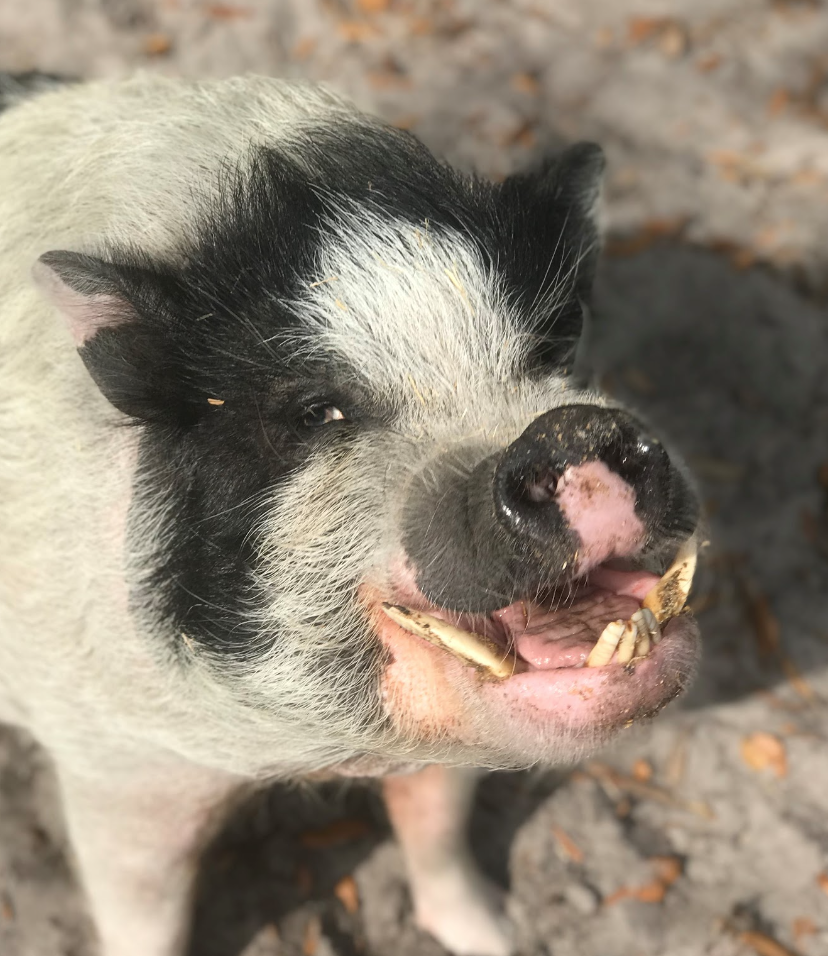
Photo Credit: Potbellied pigs 4 ever
Figure 2: Above is a pet pig showing off their tusks.
Potbellied pigs have straight tails as opposed to curled
Potbellied pigs have a straight and cylindrical tail that hangs off the back of their rump (see figure 3). This is a unique attribute compared to most other pig breeds pigs who exhibit corkscrew shaped tails (see figure 4). Your pig uses its tail to help combat flies as well as using it to display emotions (like a dog). Many of our client’s pigs wag their tails when they are excited about food or scratches.
Other pigs may bite each other’s tails and cause harm to each other. Additionally, since their tails hand straight down, your potbellied pig my get its tail caught and injured on something. Certain diseases (e.g. erysipelas) can cause necrosis (death) of tail tissue. Therefore, it is important to include the tail in your regular inspections of your pig.

Photo Credit: Harewood.org
Figure 3: Potbellied pigs have straight tails that hang off their back.
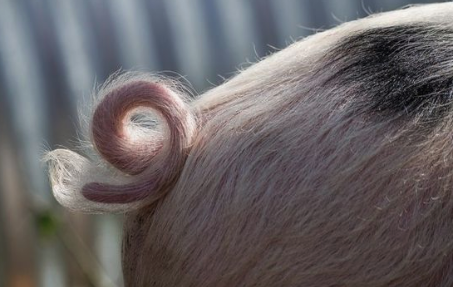
Photo Credit: Cuteness.com
Figure 4: Some pig breeds exhibit a curly and corkscrew shaped tail.
Pigs do not use sweat glands to cool themselves
While pigs have some sweat glands, they are few and far between and do not respond to thermoregulatory cues. Therefore, pigs do not sweat as a way to cool down.
Therefore, it is important to allow pigs to wallow during hot weather so that they can cool down via evaporation (figure 5).
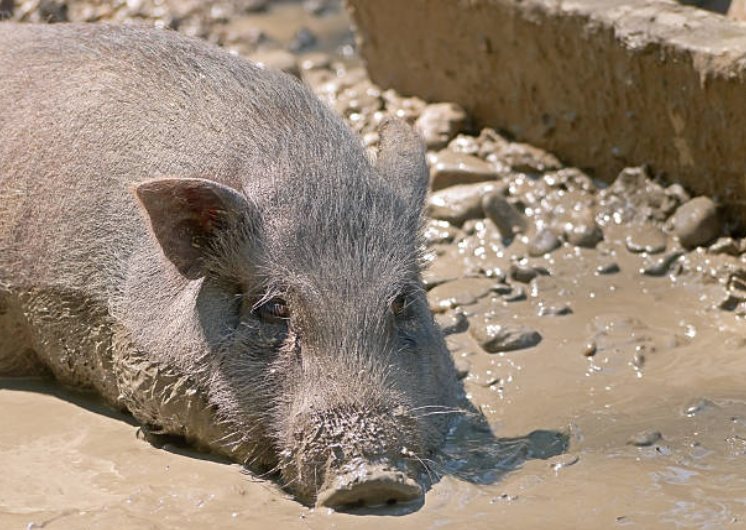
Figure 5: Above is a pet pig using wallowing as tool for cooling.
Pigs have more taste buds than humans
Domestic pigs have 3-4 times the amount of taste buds on their tongues (figure 6) as humans, with at least 19,800 taste buds. No wonder pigs like their snacks so much! This fact can play a role in why pigs can be picky eaters. Additionally, some people may also find that getting their pig to take oral medications is harder than other species.
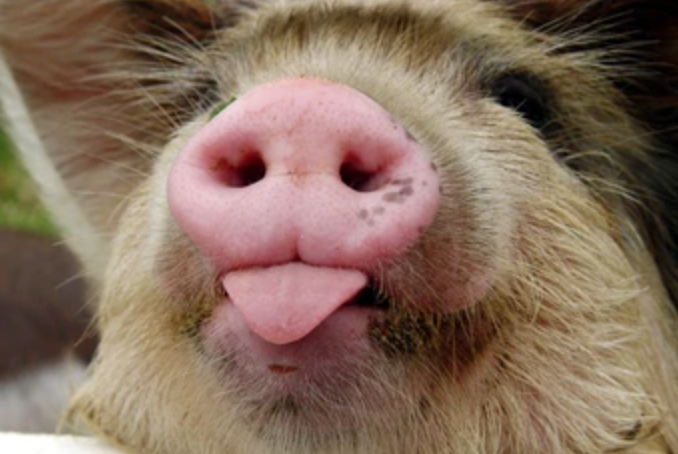
Figure 6: Above is a pig sticking out it’s tongue which has about 19,800 taste buds!
If you have a question about your pig’s unique anatomy or want to schedule a tusk trim, please do not hesitate to contact Dr. Canning. You can contact the clinic at [email protected], or on facebook.com/upperthamesvs.
References:
https://lafeber.com/vet/basic-information-sheet-miniature-pig/
https://onlinelibrary.wiley.com/doi/abs/10.1046/j.1439-0396.1999.00206.x

